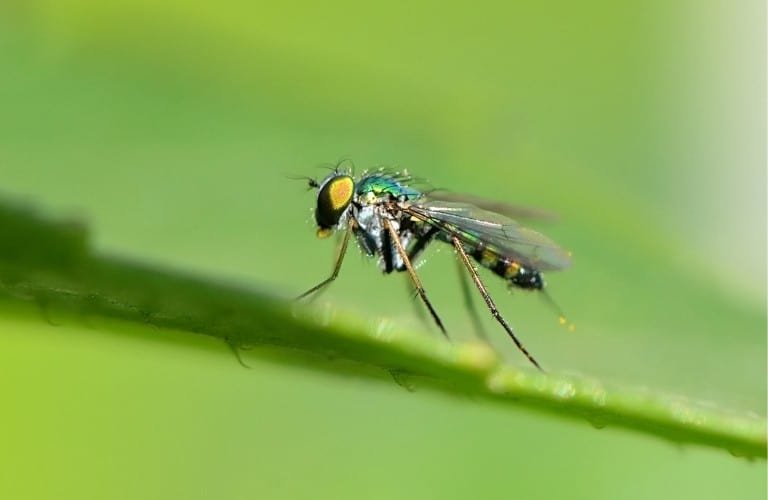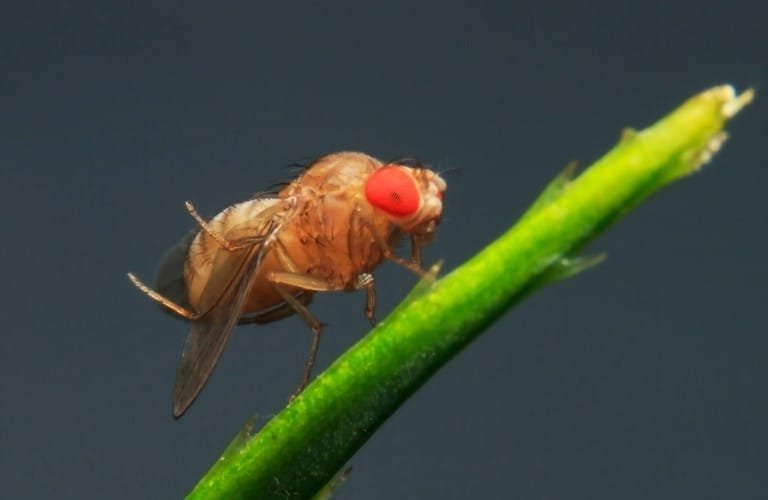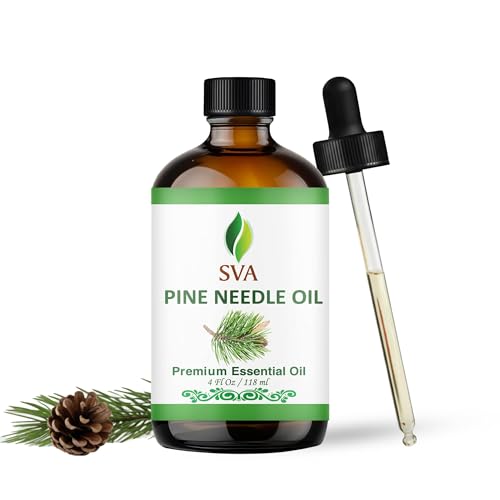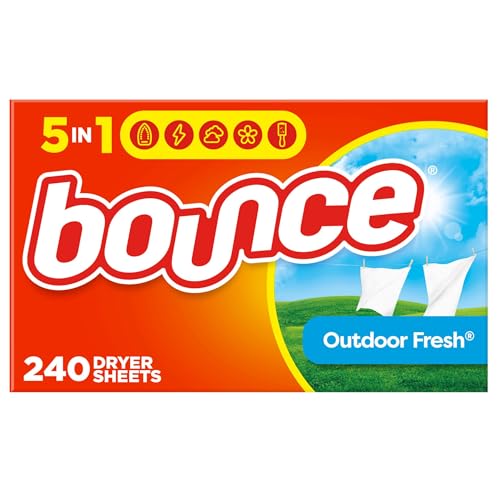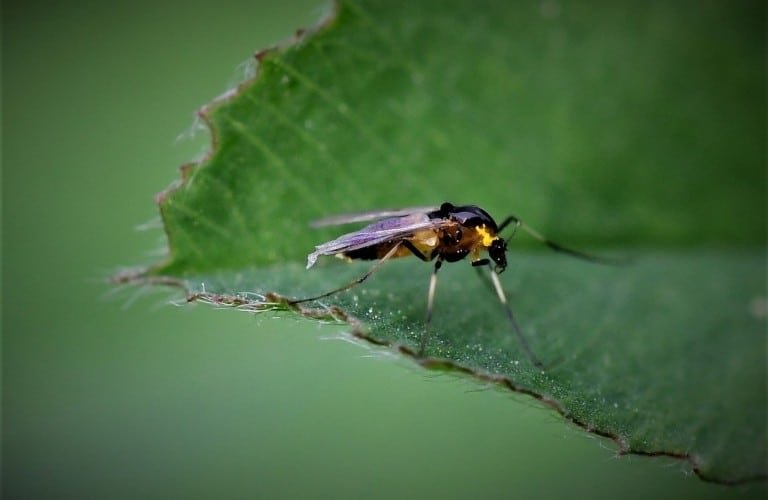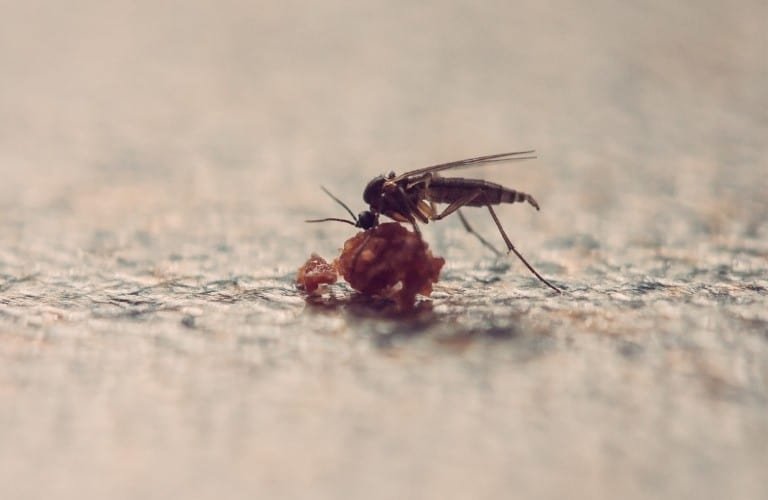Gnats are tiny flying insects that are more annoying than dangerous, since they don’t spread disease and most don’t sting or bite.
Because they are so small, it can be difficult to know what they really look like, other than to describe them as tiny, black, flying insects that are a nuisance and can be hard to get rid of.
Gnats are attracted to shady conditions, moist soil, and decomposing organic matter.
How do you get rid of gnats? Gnats can be eliminated by finding and treating the source of attraction. Throw out spoiled food, keep houseplant soil dry, and use a drain cleaner to eliminate gnats. Other methods include fly traps, aerosol sprays, and professional-strength insecticides.
Dealing with gnats can be frustrating, but it doesn’t have to be a losing battle, especially if you know exactly what to do.
Be sure to read through all of our gnat articles to arm yourself with as much information as possible to ensure you are victorious in the gnat war.
Identification
There are over 1,000 types of gnats, but the most common is the fungus gnat. These tiny flying insects are less than ¼ inch long at maturity.
They vary in color anywhere from tan to dark brown to black. Although hard to detect due to their small size, gnats have long legs and wings.
Life Cycle
Gnats pose the biggest threat to indoor houseplants.
Female gnats reproduce in moist potting soil and can lay up to 200+ eggs at a time near the soil surface.
Gnats feed on the fungus found in soil or go deeper to feed on the roots of live houseplants.
This can result in severe weakening of the plants and even death if infestations are extreme.
Gnats prefer dim, moist, warm conditions. After the eggs are laid by females, they’ll hatch in about one week.
The larvae stage lasts about two weeks. The pupal stage lasts approximately one week, making the entire life cycle of a gnat about four weeks.
Gnats typically die when temperatures get cold, but can survive indoors if they find moist, warm conditions.
Will gnats bite people? Discover the answer here.
Attractants
Gnats are attracted to light and can be found flying in groups, also known as clouds, near brightly lit windows, yard lights, or other outdoor lighting sources.
You’ll find a more comprehensive list of what attracts gnats here, so you’ll know what specific changes you need to make in your home and yard to stop providing a welcoming environment.
Gnats are also attracted to sweet, fruity smells.
This explains why gnats will fly around your body or face if you’re wearing a scented lotion, perfume, or hair products they find appealing.
Some gnats are also attracted to body heat and sweat, in addition to the moist mucus membranes around the eyes and noses of people and pets.
For more details on why gnats tend to surround your head, head over to this article.
Other Types of Gnats
Aside from fungus gnats, also called winter or houseplant gnats, other types of common gnats include:
- Sand Flies.
- Midges.
- Drain Flies.
- Eye Gnats.
- Hessian flies.
- Gall Gnats.
Commonly Mistaken Pest: Fruit Fly
Although both gnats and fruit flies are tiny, flying, nuisance insects commonly found around the home, a fruit fly is chunkier than a gnat and is about 1/8 inch long at maturity.
Fruit flies have red eyes, are tan in front, and are black in the rear of their stockier, more noticeable bodies.
Fruit flies are only attracted to overripe or spoiling produce and lay eggs there, while typically steering clear of houseplants and soil.
You can find a ton of information about these pesky pests in our fruit fly article.
Removal Methods
| Method | Estimated Cost | Type | Natural |
| Citronella | $12 | Repellent | ✅ |
| Vanilla | $10-$12 | Repellent | ✅ |
| Pine Oil | $15 | Repellent | ✅ |
| Dryer Sheets | $5 | Repellent | ✅ |
| Traps | $12/dozen | Trap | ✅ |
| Natural insecticide | $35 | Repellent/
Insecticide |
✅ |
| Insecticide liquid | $130 | Insecticide | |
| Aerosol | $28 | Insecticide | |
| Granular bait | $22 | Insecticide |
The Best Way to Eliminate Gnats
The best way to eliminate gnats is with Wondercide™ Natural Products – Indoor Pest Control Spray for Home and Kitchen.
No products found.
No products found.
While a bit pricier than some of the other options, this one is the real deal when it comes to eliminating indoor gnats safely and effectively.
This natural insecticide both kills and repels gnats and is 100% safe to use around kids and pets without waiting for it to completely dry.
It has the pleasant smell of essential oils so there is no chemical smell or harsh lingering odor.
It not only kills gnats but other flying insects too, such as fruit flies, ants, spiders, flies, ticks, fleas, silverfish, and earwigs.
The best thing about this product is that you can use it safely several times per week to wipe out a gnat infestation and then less frequently for preventative maintenance.
The product is safe to use anywhere in the home, including areas like the kitchen and bathroom.
It will not stain spots like baseboards, appliances, inside cabinets, surfaces, or fabrics, but testing a small area first is always recommended.
It works to kill insects by using all-natural cedarwood oil, in addition to lemongrass, peppermint, and rosemary.
The reason cedarwood oil works so well is that it affects octopamine levels in gnats. Octopamine regulates heart rate and movement in gnats.
When cedar oil is sprayed, it blocks their neurotransmitters, so they are affected on contact. Shortly after contact, gnats suffocate and die.
Be sure to read our article, “Best Gnat Traps and Sprays” to see a list of products we personally recommend for getting rid of gnats safely and effectively.
Basic Guidelines
Gnats are not destructive, but they’re definitely annoying when infesting a home. (Find out how exactly they get inside here.)
The biggest threat is to indoor houseplants with consistently or overly moist soil.
The best proactive measures to take are to resist over-watering plants, remove overripe foods from the kitchen counters, and clean gunk-filled drains.
Dry Houseplant Soil Conditions
When gnats find their way into the home, they seek out the moist soil of houseplants.
They reproduce in moist soil and both the female and larvae feed on the fungus found there. Gnats also feed on the roots of live houseplants.
Limit the number of times per week and amount of water given when tending indoor plants.
Keep the soil mostly dry instead of extremely moist to make conditions less favorable for gnats.
Clean Kitchens
Since gnats love dim, moist places where they can find fungus (food), the kitchen is a hot spot.
They can be found near decomposing food left on the counter (think fruit), garbage cans, or leaky pipes under the sink.
It’s important to immediately remove overripe or spoiling food from the counters, wipe up food spills, and store produce in the refrigerator.
Other helpful things to remember to do are:
- Bag up and remove garbage regularly.
- Repair leaky faucets or pipes under the sink.
- Avoid leaving dirty dishes in the sink.
Clean Drains and Garbage Disposals
Gnats, especially drain flies, are frequently found in dirty drains and garbage disposals where old food scraps may be plentiful.
To find out if gnats are living inside your drains, cover the drain with clear tape.
After a while, if you see gnats stuck on the underside of the tape, you’ve identified the drain as a source of invasion.
To eliminate and avoid gnats, kitchen cleaning should include a regular, thorough cleaning of drains and garbage disposals.
Using bleach, dish soap, or a commercial cleaner like Invade Bio Drain Treatment helps keep drains free from food scraps and the gunk that is sure to attract gnats.
This applies to both kitchen and bathroom sinks.
Natural Solutions to Get Rid of Gnats
While the only things that may be damaged are your houseplants, gnats are extremely annoying and may indicate that things in the kitchen or bath need a good cleaning.
No one likes pesky gnats buzzing around their home. The good news is that there are plenty of natural solutions to get rid of them.
Indoor Solutions
Gnats can be found in or near houseplants, in and around sinks, around garbage, and hovering over food left on counters.
They don’t hide and tend to move around frequently during the day or night.
Vanilla or Pine Essential Oil
Gnats hate the smell of vanilla extract and pine tree essential oil, so the use of either one keeps them at bay.
Using a diffuser (this one is fantastic) that sends the aroma throughout the house is effective as a repellent.
Vanilla and pine oil (mix with a carrier oil first) can be sprayed or rubbed directly on skin as an outdoor repellent.
Dryer Sheets
Oddly enough, scientific studies have now proven that certain dryer sheets are effective at repelling gnats.
The active repellent appears to be linalool, which gives off a flowery scent found naturally in plants like basil and lavender.
Linalool not only acts as a repellent, but if found in high enough levels, it may be toxic to gnats.
Dryer sheets can be:
- Rubbed on skin (test for allergic reactions first).
- Kept in pockets of clothing.
- Cut into strips and placed in potted houseplants.
- Stashed under sinks.
Bounce™ Fabric Softener and Dryer Sheets effectively repelled gnats in laboratory tests and were surprisingly impressive at discouraging mosquitoes too.
Noninsecticidal Traps
Using fly traps or traps specifically geared towards gnats is an all-natural, effective indoor elimination solution.
The traps may not be the most attractive sight when trapping and killing the gnats, but they are a nontoxic gnat-killing treatment.
Traps work by trapping gnats on the sticky surface where they are unable to move or eat, and they eventually die.
Because fungus gnats are drawn to houseplants and lay eggs in the soil, placing traps near houseplants just makes sense.
BioCare Gnat Stix are extremely effective at catching and killing gnats before or during an infestation that can cause potential harm to the plants.
This product is safe to use around food, pets, and kids and only requires one trap per plant to keep gnats away.
Natural Insecticide
If you’re looking for a product that is 100% pet and kid friendly, requires no time for drying, and is safe to use in delicate areas like the kitchen and bathroom, a natural insecticide is for sure the way to go.
Wondercide™ Indoor Pest Control is a safe, nontoxic indoor solution to eliminate and prevent future infestations.
This product uses the power of natural essential oils, primarily cedar, which is a natural gnat deterrent.
Once gnats come in contact with the spray, it shuts down their octopamine neurotransmitters, which regulate heart and movement functions, and they smother and die.
Outdoor Solutions
At dusk, it’s common to see clouds of gnats flying around. These annoying clouds are typically male gnats forming a mating group.
During rainy seasons, there tend to be more gnats because of the extra moisture outside.
Gnats are also attracted to lights and yards that provide damp, humid, fungus-friendly conditions they enjoy, like moist mulch, leaf piles, and wet soil.
Tidy Up the Yard
Decomposing organic matter in the yard is a source for attracting gnats.
Potted plants or gardens should be weeded regularly, and any dead plants should be removed.
Keep an eye on yard debris in general, and remove wet, dead leaves and grass clippings from piling up.
The key is to keep the yard tidy and free from piles of decaying matter.
If you have fruit trees, berry bushes, or vegetable gardens, pick produce before it becomes overripe, toss out dead vegetation, and don’t leave anything lying on the ground.
Keep Things Dry
Since gnats love damp and moisture-rich areas, fix any leaks coming from hose bibs or other plumbing connections on the house’s exterior.
- Keep gutters and downspouts clean and free from decomposing organic debris that clumps, clogs, and stays wet.
- Replace leaky or broken gutters and downspouts where water leaks and forms puddles and standing water on the ground that never dries.
- Correct drainage issues by changing the grade away from the foundation of the home to avoid pockets of wet soil, damp mulch, or puddles.
- Remove all other standing water on your property, especially causes of excessive puddling in places like uneven or severely chipped concrete walks or patios.
Exterior Lighting
Consider replacing yard light bulbs with lower wattage or bug light bulbs (like these LED bulbs from Sunco), that discourage gnats and other flying insects from coming near the home.
Citronella candles and tiki torches are other ways to provide additional lighting while repelling gnats.
Cover Garbage and Compost Bins
Because gnats are drawn to decaying food and organic matter, they will seek out open garbage cans and compost bins.
Keep these items covered and moved as far away from the house as possible.
Hose down garbage cans and lids periodically to keep them clean and free from fungus and food spills or particles.
Pesticide Solutions to Get Rid of Gnats
Pesticides, specifically insecticides for gnats, should be used with caution as they contain potentially toxic or harmful chemicals.
If efforts with natural solutions aren’t solving an infestation problem, consider ramping up your efforts with professional-strength insecticides.
Most commercial products, available in different forms, such as sprays or liquids, are for use either indoors or outdoors.
| Preview | Product | Rating | |
|---|---|---|---|

|
FMC CB-80 Contact Aerosol 17 oz, 1 Can | Check Price on Amazon | |

|
Bonide Systemic Insect Control, 1 lb. Ready-to-Use... | Check Price on Amazon |
Insecticide Liquid: Control Solutions Mosquito Mist Ultra
A major problem with gnats is that they come out in swarms usually around dusk. This presents a problem during outdoor gatherings.
A highly effective solution is to use an outdoor fogger. Although this product is titled as a mosquito killer, it will work on gnats as well with active ingredients permethrin and piperonyl butoxide, a synthetic pyrethroid.
It offers a fast knockdown, plus a long-lasting residual. It is safe to use outdoors in residential yards set up for recreational activities.
An advantage of this product, as compared to its competitors, is that you don’t need a fancy fogger to use it (although you may want an automatic misting system if you have a serious infestation around standing water that can’t be removed from your property). It can be used in handheld sprayers just fine! This means it can be used on the ground or in the air, and it may be used in thermal and non-thermal conditions. The instructions are clear, though – dilute this product before use!
Insecticide Aerosol: CB 80
This insecticide works with active ingredients piperonyl butoxide and pyrethrin, which kill gnats by attacking their nervous systems and rendering them immobile, typically upon contact.
A professional-strength insecticide, it can be used indoors and outdoors.
Follow warning label instructions carefully as there are ventilation hazards when using indoors.
It is safe to use both on plants and infested soil.
Because of the potentially large number of larvae, an infestation requires treatment every two to three days for about two weeks, followed by routine maintenance less frequently.
It should be used outdoors when the weather forecast calls for dry conditions for at least 24 hours.
The treatment area needs to dry completely before it is safe for people or pets.
Granular Bait: Bonide BND952
For those who prefer not to spray, consider granular insecticide treatments. This product comes ready to use with no mixing required.
The active ingredient in this product is imidacloprid, which works after sprinkling on plants, in flower beds and on shrubs.
When wet, it soaks into the roots of plants to protect them and the soil from gnat infestations. Both adults and larvae are exterminated.
It is a long-lasting solution with treatment required only once every eight weeks.
This product is for use on nonedible plants only and has been found to be potentially dangerous to hummingbirds and bees.
Safety Precautions When Using Pesticides
Pesticides can be toxic or harmful if not used properly.
It is extremely important before applying any kind of pesticide to thoroughly read all directions and warning labels.
Follow all instructions to the letter, including proper storage and disposal of empty pesticide containers.
Here are specific safety guidelines:
- Proper mixing – Use caution when mixing and the correct amount of product for the size of treatment area.
- Prepare treatment area – Clear area of food, children, pets, plants, and other sensitive items before application and keep them away until pesticide is completely dry.
- Proper ventilation – Open windows and doors and keep a fan nearby for proper ventilation based on manufacturer’s guidelines.
- Cover skin completely – Wear a long-sleeve shirt and pants, over-the-ankle socks, work boots, and heavy gloves prior to coming in contact with the product.
- Face protection – Wear protective goggles and a mask to prevent ingestion or inhalation of toxic fumes. Tie long hair back or secure in a way to keep off of the face.
When to Call a Professional Exterminator
If your natural or commercial gnat treatments don’t seem to be working, you experience repeated infestations, or simply don’t feel comfortable handling pesticides, call a professional exterminator.
The pros know exactly where to look for potential sources of gnat infestations and use professional-strength products that may not be available for consumer purchase.
A professional exterminator can explain the process, point out sources of attraction, and discuss a treatment plan to eliminate gnat infestations safely and effectively in and around your home.
Don’t forget to check out our gnat page for more prevention tips, helpful elimination techniques, and more effective products to wipe out the gnats that are plaguing you and your family.


